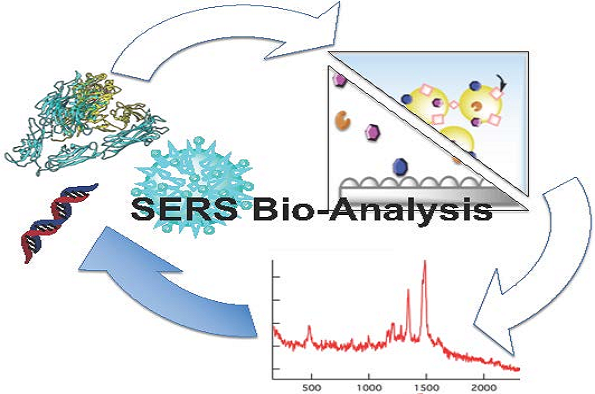
What can SERS tell us about Complex Biological Samples?
- Roy Goodacre
- Admission: Free
Add this event to my calendar
Click on "Create a calendar file" and your browser will download a .ics file for this event.
Microsoft Outlook: Download the file, double-click it to open it in Outlook, then click on "Save & Close" to save it to your calendar. If that doesn't work go into Outlook, click on the File tab, then on Open & Export, then Open Calendar. Select your .ics file then click on "Save & Close".
Google Calendar: download the file, then go into your calendar. On the left where it says "Other calendars" click on the arrow icon and then click on Import calendar. Click on Browse and select the .ics file, then click on Import.
Apple Calendar: The file may open automatically with an option to save it to your calendar. If not, download the file, then you can either drag it to Calendar or import the file by going to File >Import > Import and choosing the .ics file.
The identification and quantification of molecules in biological samples is key for understanding mechanisms associated with health and disease. New techniques that provide complementary analysis may lead to the diagnostic and prognostic tools for tomorrow. The enhancement of Raman signals by nanostructures, surface enhanced Raman scattering (SERS), provides a sensitive label-free method of chemical analysis. The combination of SERS with fluid dynamics, an approach we call sheath-flow SERS, enables ultrasensitive and high-throughput Raman characterization. Using sheath-flow SERS as a detector for capillary electrophoresis and liquid chromatography separations enables high throughput Raman characterization in biological fluids at relevant concentrations. In other work we utilize Raman enhancements from nanostructures on the apex of atomic force microscope tips, so called tip enhanced Raman scattering (TERS), for highly selective investigations of protein receptors in cellular membranes. In protein-ligand binding experiments, our results show signals characteristic of the receptor’s binding site, which enable investigations of ligand recognition by membrane receptors in cells. Overall, our work provides insight into the origin and utility of enhanced Raman signals for ultrasensitive bioanalysis.
Biography: Zachary D. Schultz, Ph.D., is an associate professor at the The Ohio State University. Prof. Schultz earned his B.S. degree from the Ohio State University in 2000 and Ph.D. from the University of Illinois at Urbana-Champaign in 2005. He performed his doctoral studies under the supervision of Prof. Andrew Gewirth using infrared-visible sum frequency generation spectroscopy to characterize electrochemical interfaces. As a graduate student, he was recognized with an ACS Division of Analytical Chemistry Graduate Fellowship (2004). Upon completing his Ph.D., he was awarded a National Research Council Postdoctoral Fellowship to conduct research at the National Institute of Standards and Technology (USA). His research at NIST was performed largely in collaboration with Ira Levin at the National Institutes of Health (USA). Following his postdoctoral training at NIST, Dr. Schultz continued as a research fellow with Dr. Levin at NIH using vibrational spectroscopy and microscopy to study biomembrane systems. While at the NIH, Dr. Schultz was awarded an NIH Pathway to Independence Award. Dr. Schultz began his independent career as an assistant professor of chemistry and biochemistry at the University of Notre Dame in 2009 and was promoted with tenure to associate professor in 2015. In January of 2018, Prof. Schultz moved his research program to Ohio State. Prof. Schultz was named a Cottrell Scholar in 2013 in recognition of his outstanding teaching and research. Prof. Schultz has served on the Analytical Chemistry Editorial Advisory Board’s Features Panel and is currently on the Editorial Advisory board of Luminescence (Wiley) and Analytical Methods (RSC). Prof. Schultz’s research focuses on developing innovative approaches utilizing the unique interactions between light and nanostructured materials for near field imaging, ultrasensitive label-free spectroscopic detection, and controlling chemical reactions.
